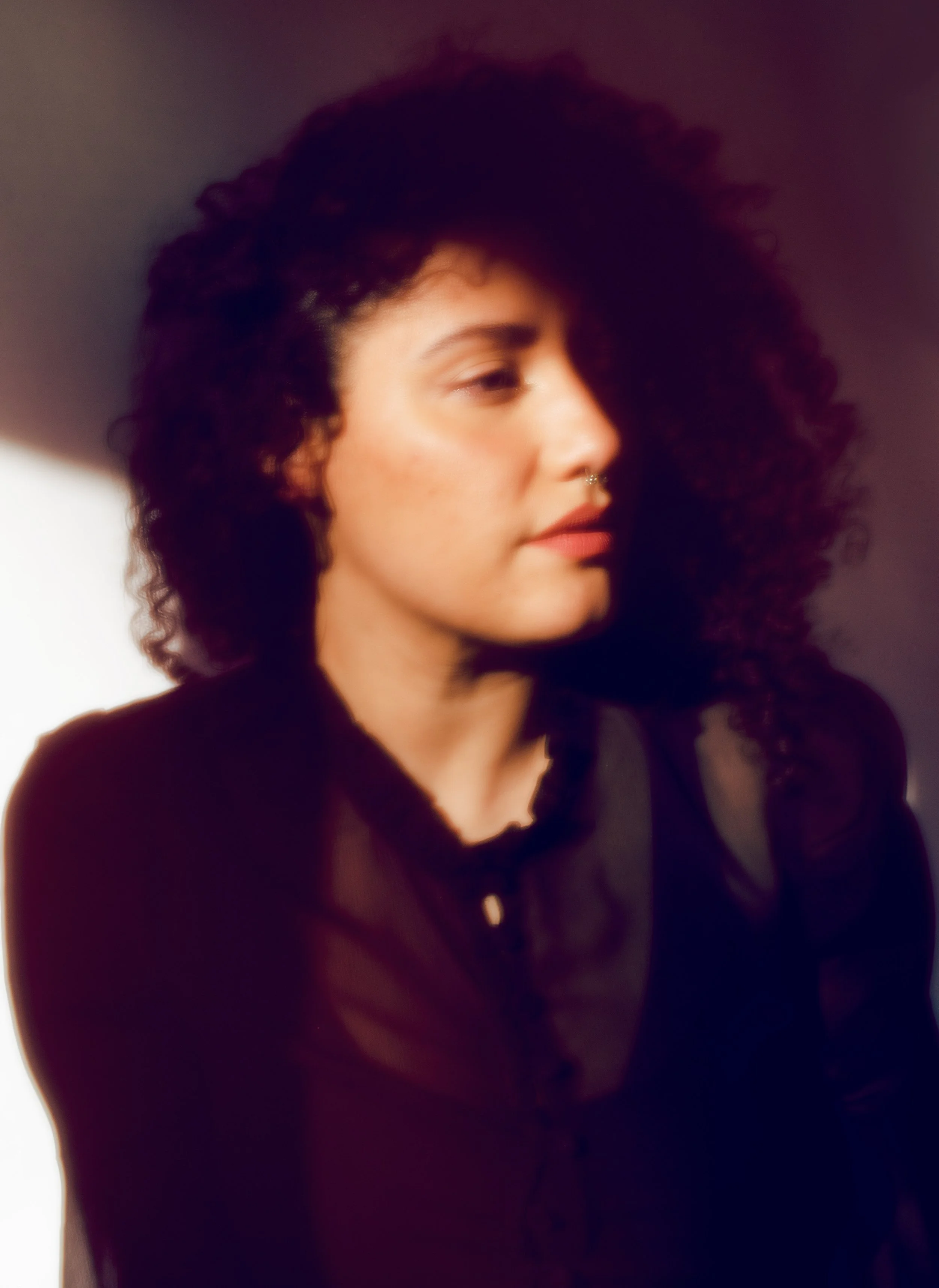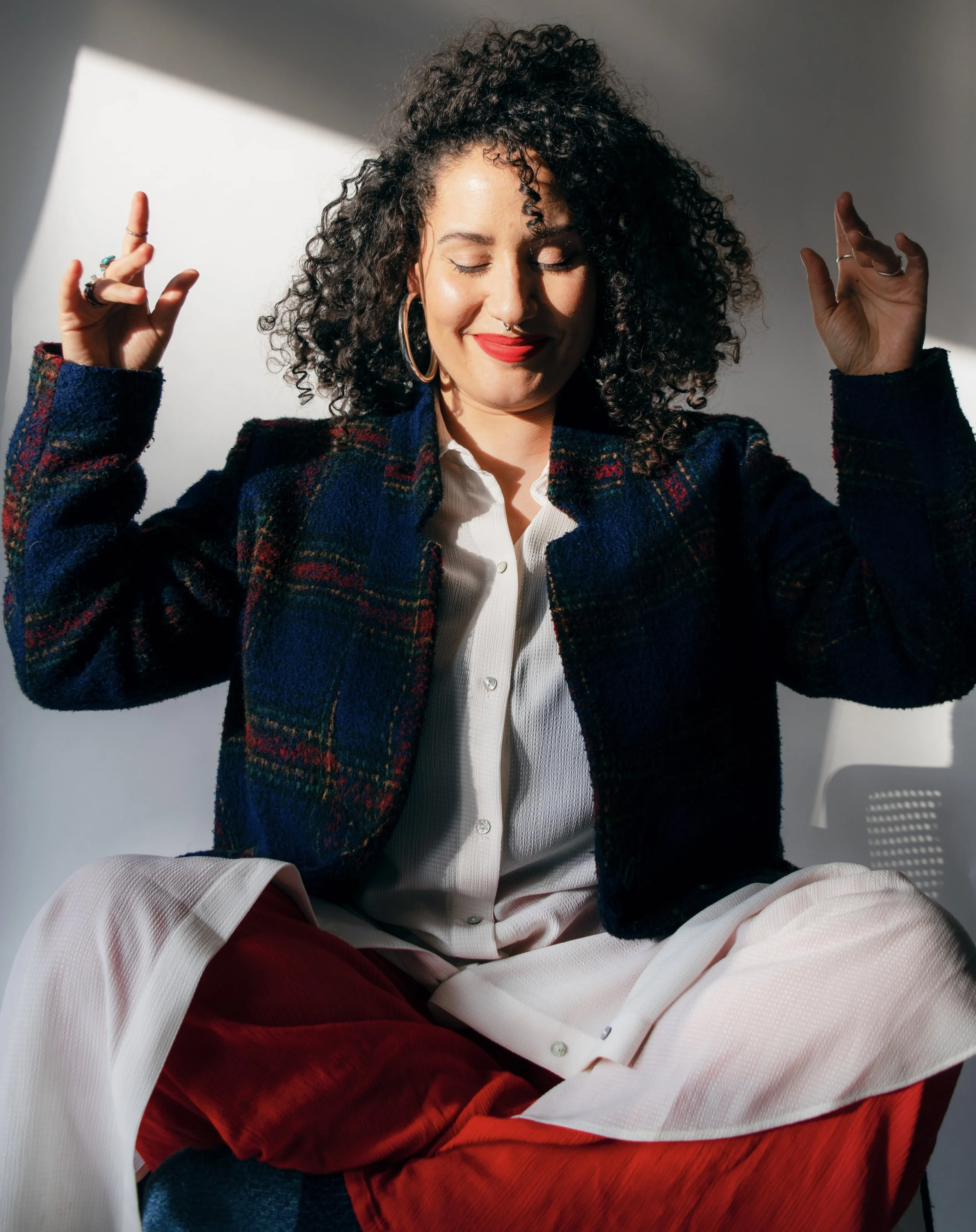Talking to: I Used To Be Sam
I Used To Be Sam is the latest step in an ongoing creative journey. Songwriter and vocalist Annie Goodchild, previously the lead singer of jazz covers collective Postmodern Jukebox, took the brave step of exploring tough questions of identity, family and belonging through their music under their most recent artist moniker, I Used To Be Sam – a name that came from the discovery that their birth name was Samantha.
Seamstress is the third single from their self-titled EP, set for release on June 14. Of their previous releases, Gentle is poised and carefully crafted, overflowing with vulnerability and dazzling shards of hope. Mountains bubbles and rattles with something pithier, set against sweeping cello notes, string plucks and stunningly refracting vocals. Deep and rich as stained glass, Seamstress itself is an extraordinarily beautiful work in which Goodchild shapes a heartbreaking realisation into a song shot through with light. A fourth single, Grateful, is out on June 16.
We had the great pleasure of chatting with I Used To Be Sam from their home in Basel, northern Switzerland, taking in everything from family connections to graphic novels and artist friends.
How are you, and how’s your week been?
Good! It's been full summer here. It's been unexpected, but very nice. I'm ready for some real vitamin D. Yeah, I would say the whole year has been tiring, but productive. I'm going back to the States for the first time since before the pandemic in July. And I'm really looking forward to seeing my people and eating delicious food, and yeah, having a full recharge.
Your new single, Seamstress, is just beautiful. Could you tell me a bit more about the song and about the EP that it’s part of?
So this is the first EP, or project, from I Used To Be Sam. I found out Samantha was my birth name. The project in general is acknowledging who I used to be – these dual realities that I could have lived in, these versions of myself. I kind of had a tumultuous, intense couple of years. I took one of those DNA tests, and I ended up finding some of my birth family and getting aggressively rejected by my birth mother, which was incredibly painful. But it was also the catalyst to start this project.
The EP has five songs. Each song touches on a different subject of my experience being a transracial adoptee. And that kind of rejection, in general and on Seamstress in particular… it's a song that I knew I was going to write the moment I Used To Be Sam came to me. It's a song to my birth mother, for my birth mother. And it's about the realisation of her not wanting to know me in any way, which is really sad, but I have that knowledge now. And that can empower me to create change and movement from that.
It's extremely powerful. Especially the line in Seamstress, “at least now I know, now I know.” I think it's incredibly courageous to be able to share this very personal story. And it's obviously so intrinsically linked to your creative process. Was it always very clear to you that you wanted to share that? Or did you question it a little bit?
You know, I've been writing music for some time now. And I've been delving into myself and writing about heartbreak and joy, and life. And it's shocking to me now that it never even occurred to me to write about this huge part of my identity, which is being adopted – and more so, being transracially adopted. And I think it's because up until now, I wasn't able to – it had been some kind of wall, you know, I wasn't able to access that. And then, the idea of I Used To Be Sam came so quickly, it was very clear to me that this is the music I need to be making.
This is emotionally and spiritually where I'm at right now in life, this is how I'm going to keep growing and moving. So up until this point, I could have never written this. But now, well, it was a really easy choice. Because I kind of had to, I couldn't really hold the experience of getting rejected by myself, and I needed it to come out in some way. And so it came out like this.
I can only imagine what that must be like. But you've been able to make something really beautiful and positive out of this, and something that connects so many other people through the music or through the experience itself, which I think is amazing. Do you find strength through music and creativity?
Yeah, I think interpreting life through sound and through music is how I get a grasp on it. And there's comfort in that, it feels safe in its own way. And that makes me feel stronger.
You've been able to take positives from this really difficult experience with your birth mother and with your family and turn it into a strength. Is that something that has particularly come through this experience of writing Seamstress? Or is it something that ties in with other areas of your life as well?
I think as a musician, and as a creator, that's kind of what we do. We write songs about our life or our observations. So in some ways, it comes naturally to me. But this feels just a bit more close to home, a bit more vulnerable and a bit more personal.
You also bring your daughter into the song.
Yeah. I have a daughter and she sings on a few other songs. There's also a quote from her in the beginning of the song, and it's not some big fancy quote, it's a bit mundane, but I wanted her there so she knows that I was there. I'm breaking the cycle. I'm going to be present and I'm going to be here for her. And she's of me and I am of her. The way I am of my birth mother. She's just not here.
That family link is very physical, isn't it?
Yeah, absolutely. I can't speak for everybody, but in my experience – I have a lovely adoptive family who love me and support me and say all the right things. And yet for me, there was still always something that wasn't quite complete. I think it'll always be like that a bit.
The video for Seamstress is very sensory and evocative. Could you tell me about where the video was filmed? And what made you want to film it there?
It's filmed in the woods outside of Basel. And it's a place that I've – well, “hiked” to would be a strong word, more like “aggressively walked” to – many times [laughs]. They’re really beautiful woods, and there's something about Mother Earth and this being a birth-mother song that really made sense.
For me, the song is really powerful. I wanted the video to enhance the song and not take anything from it. And I wanted there to be a vagueness, for some kind of kind of aimless wandering to come through. That's also where the floating comes from, and then my feet on the ground. The floating represents the unknowing, that question of, does she want to meet me? Do I look like her? Does she think about me? Does she think about me on my birthday? All these things. And then my feet finally touch the ground. And that's the kind of earth-shattering realisation that she doesn't want to meet me. But it also grounds me, and I've been able to create all of this because of that realisation. So it's kind of honouring that.
You’ve divided your work so far into chapters, which I think is really interesting. What led you to divide things more categorically than just into songs or albums?
I'm a little bit of a book and graphic novel nerd, so I like the idea of it. It's been very intuition-led, and it felt right. But going past that, it doesn't just feel like an EP… I mean, putting out a body of work is a lot of work. It takes a lot of time. And the EP is the very end result of a lot of stuff that goes into it from a lot of people. But this really feels like quite a chapter in my life. And I like the idea that if I record more songs, which is already starting, that I can be adding to these chapters and conceptually have this new version of some kind of audiobook, of this version of my life, just through music and these quotes from the other transracial adoptees who have talked to me. Yeah, it felt right. It just felt right.
Who inspires you in life – creatively, musically, or just generally?
I've had a lot of people who have inspired me. I was out of the house at 17 and just falling in love with as much life and people as possible. The people who inspire me the most are my incredibly talented, hot, funny, smart friends and chosen family who have stayed with me, who have helped me and boosted me up enough to finish this project and put it out into the world.
What sorts of things do you get up to outside of music?
I'm kind of an extreme introvert and homebody. And I know people say that, but like, I really have only a handful of people I'll leave the house for unless I'm getting paid to go play music somewhere! [Laughs] But I have a very active mind. So sleep, and watercolouring, and just kind of existing in my mind and having the space for that is what I do my free time, and probably watching too many movies, and other, you know, human things.
And graphic novels!
And graphic novels. Yeah, I go hard for those.
What's in the pipeline for I Used To Be Sam?
My next single comes out in June. And then the EP itself comes out in September, which I'm super excited for. And I'm going to have a big EP released show in Basel on the 17th of September. And I've met with a woman named Abélia Nordmann, who runs a lot of choirs in Switzerland and Basel land. I'm going to have a choir sing the entire EP with me for this live show. I'm super stoked.
I’m totally obsessed with backup vocals. I try to use my voice like an instrument in different ways and have different versions of it that I can project out. And I grew up listening to Aretha Franklin and all these like incredible vocalists that have incredible backup vocalists. So to be able to showcase that live is huge.
Wow, that's amazing.
Also, I have a really great friend whose artist name is Red Moon, and we're going to be working on a special project soon. She's a Norwegian artist, check her out!
Cool! It's been so interesting talking to you. And I feel like I've learned a lot.
Thanks so much for being interested and taking the time and listening to my music!











